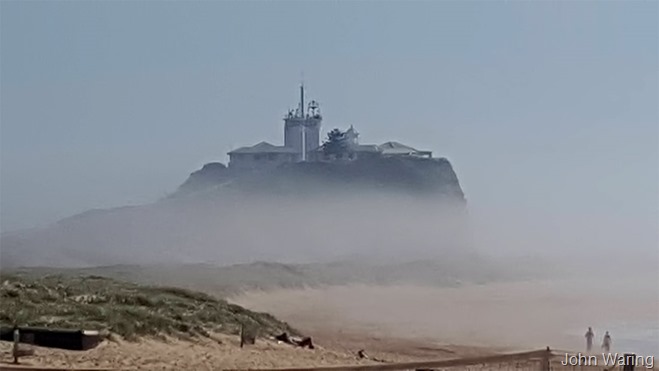24 December 2015
21 December 2015
| Old tom and the wreck of the Alladin in Jervis Bay. | ||||||
 | ||||||
This is the story of “Old Tom” Thomas
Cleary, who spent his life on the high seas and endured many adventures along
the way. Old Tom, just turned 97 when he told his story to a correspondent from
the Cumberland Argus and Fruitgrowers Advocate
Parramatta in 1901.
Born in London to Irish parents in 1805. | ||||||
| ||||||
| ||||||
Old Tom sailed to all parts
chasing slavers, pirates and opium clippers. Much of his time was spent on the
south coast of Africa.
In 1834 he saw service in the China War. | ||||||
| ||||||
| Tom had served 32 years in the service, after the China War he was paid off and left the service but shortly after rejoined. | ||||||
| ||||||
| Tom was soon back at sea, first joining a whaler at Port Phillip in 1851. | ||||||
| ||||||
| ||||||
| ||||||
The whaler that took me off'
was called the 'Aladdin.' We were afterwards wrecked in Jervis
Bay.
| ||||||
| ||||||
| ||||||
| full account - http://nla.gov.au/nla.news-page8898302 | ||||||
Western Star and Roma Advertiser Toowoomba 1902. | ||||||
| Just one year after the interview above ‘Old Tom”
passed away at the Parramatta District Hospital. After all his adventures he
spent his final days making veranda blinds and was well known in the town. He was bright and well and clear until 10 days before his death when he contracted pneumonia. It wasn’t the first time ‘Old Tom” had died. When Tom left the navy he was granted a pension, but owing to illness for 18 months he neglected to draw his pension. Then when he did apply for it he was told that he had been written off as " dead." |
18 December 2015
War! War! War!
17 December 2015
Undesirable sights near Jervis Bay - 1893
16 December 2015
Shoalhaven Snippets
Jervis Bay Items. 1915
With Christmas so close and the rain bucketing down accompanied by severe lightning and loud thunder I came across this small article from 100 years ago.
I hope our holiday makers have a better time of it this year.

15 December 2015
Severe gale off Jervis Bay nearly claims another ship
14 December 2015
10 December 2015
Desikoko Relics
| Preservation continues. |
| Back in April 2015 some objects from the wreck of the Desikoko were given to the museum, I have already covered the loss of the Desikoko and these relics, but the preservation process is still ongoing, today one of the objects was bought out of the water bath and allowed to dry, I took the opportunity to snap a couple of close up pictures of these rare relics. |
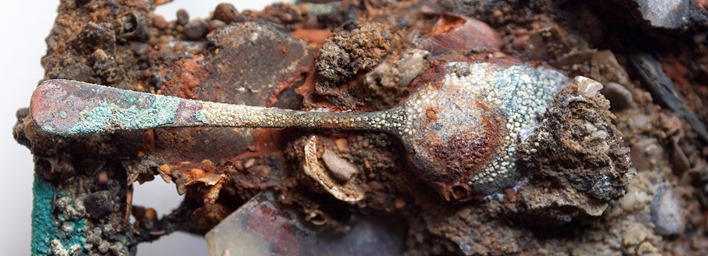 |
 |
Wreck of the T.S.S Merimbula.
 |
| This photograph of the T.S.S. Merimbula appeared in the April edition of the Sydney Mail 1928, it shows the ship after she ran aground on the rocks at Currarong. You can see Lobster Bay with a small sailing vessel in the background. |
  |
7 December 2015
Captain’s Point Jervis Bay
| Paul Newman sent us these amazing images, Paul served with the Australian Navy on submarines. He now works in the old Engineering Workshops at Creswell. |
 |
| This image shows some of the original wharf with small sailing vessels tied up to their moorings. Particularly interesting is the silhouetted figure of a well dressed lady standing on the wharf. |
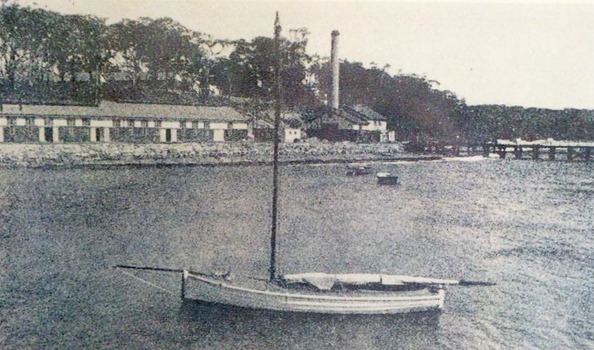 |
| Here we see most of the Engineering Workshops have been constructed, including the Power House, the coal to generate power was supplied by small coastal steamers. |
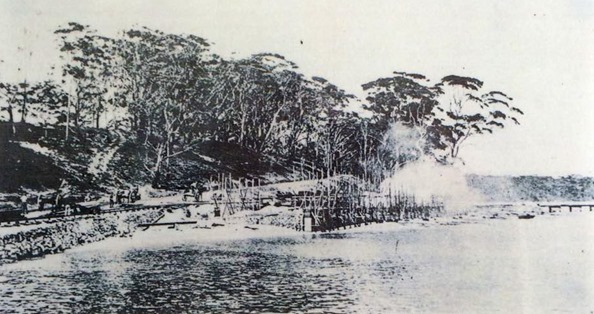 |
| The image above shows the railway line running along the shoreline. |
 |
| This photo would have been taken much later, most of the facility was complete and operating. |
| Paul went out and took a few images to show what is left of the old wharf. |
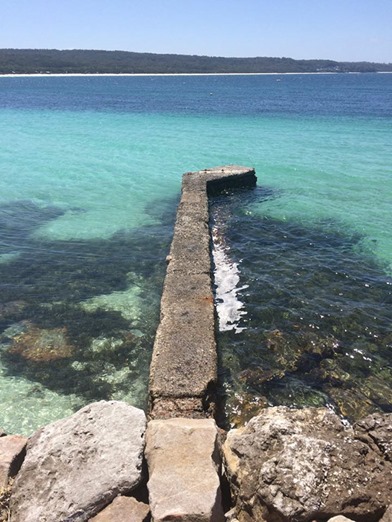  |
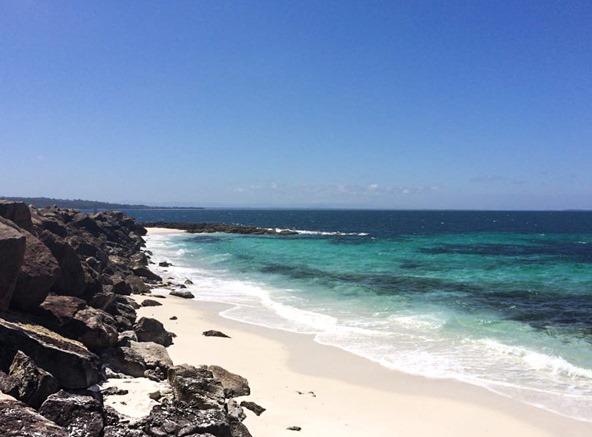 ![[image5.png]](http://lh3.googleusercontent.com/-lXjc72kRxe8/VluqS0kCP-I/AAAAAAAALQY/-BY615rs3aY/s1600/image5.png) |
| This photo shows us what is left of the rock shelf that was named Captain’s Point. Most of it was covered by the original breakwater, leaving this small section jutting out into the bay. The black and white image shows the point before it was covered. |
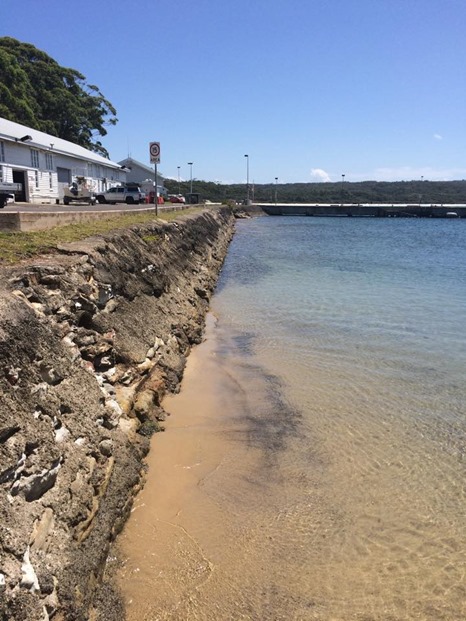 |
| The present day wharf, with some of the original Engineering Workshops, now heritage listed. |
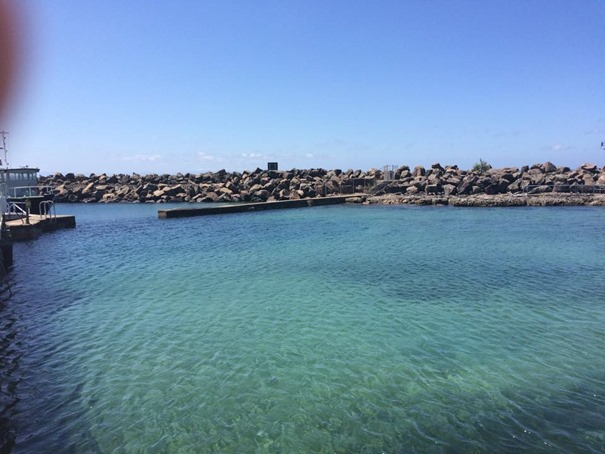  Sun bakers - By the 1930’s the Great Depression had hit Australia hard, the government deemed the college to expensive to operate as a training facility and moved the cadets to H.M.A.S Cerberus in Victoria. Sun bakers - By the 1930’s the Great Depression had hit Australia hard, the government deemed the college to expensive to operate as a training facility and moved the cadets to H.M.A.S Cerberus in Victoria.Many of the buildings were leased to private operators as a holiday resort. This picture shows holiday makers sunbaking and swimming inside the protection of the breakwater. The college was re-established as a training facility for the navy in January 1958. |
| We would like to thank Paul for sending us the photo’s. |
30 November 2015
Jervis Bay - The promised land.
| The promise of a new port for the colony at Jervis Bay had been in the pipeline for many years. Successive ministers and governments made grand gestures during discussions about the future of Jervis Bay. | |||
| Shoalhaven News July 1915 | |||
| Opening of the new port and the National Railway.
| |||
|
| |||
| The Railway comes to Jervis Bay 1915. | |||
| Even though a railway link of any sort never eventuated, I’m sure it would be a surprise to many people to know Jervis Bay did end up with a working railway line and locomotive operating on it’s shores. | |||
 Locomotive 530 travelling along the shore-line of Jervis Bay during operation at the Royal Australian Naval College. Locomotive 530 travelling along the shore-line of Jervis Bay during operation at the Royal Australian Naval College. | |||
| During the construction of the break wall at the Royal Australian Naval College, two stone quarries were excavated and a small locomotive hauled the stone between the quarries and the breakwater. | |||
 | |||
|

| |||
 | |||
| The two images above shows the railway line extending onto the wharf and along the water front, it was used for unloading timber and coal during the College’s construction The Sydney Mail 1913. | |||
26 November 2015
Fire rages on Beecroft Peninsula
| Strong westerly winds have fanned a large bushfire on the Beecroft Bombing Range. locals are worried that the predicted southerly change this afternoon might send the fire towards Currarong. |
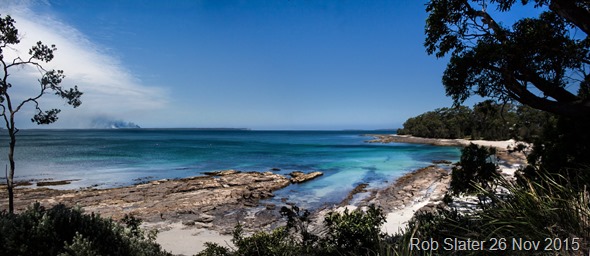 |
| Fires around the Jervis Bay region have featured in many old newspaper articles. The people of Huskisson and the surrounding districts have had to battle bush fires since the the first Europeans arrived and started to clear the bush for settlement. I will post a few of these stories at a later time. |
| |
Hornby Lighthouse
| Sydney Harbour. |
 |
| Hornby Lighthouse, also known as Sydney Harbour South Head Lower Light, is an active lighthouse located on the tip of South Head, New South Wales, Australia, a headland to the north of the suburb Watsons Bay. |
| |
1885 Huskisson
| The Life and times – Police V. Parnell. | |||
The Shoalhaven Telegraph July 1885
| |||
23 November 2015
The Cruise of the Wolverene.
| Jervis Bay has played a fundamental roll in the Navy's history. The navy were regular visitors and used the bay for rest and recreation as well as the all important shot practice. In 1889 the H.M.C.S Wolverine left Sydney Harbour bound for Jervis Bay to engage in shot practice. She was a well know warship and had been in Australia since 1877, and for some years was the flagship of the Imperial Squadron in Australian Waters. Progress down the coast was slow, on leaving the Sydney Heads she encountered relatively calm conditions, but as she stood out a few miles she encountered a heavy roll, which catching the vessel broadside on, caused her to tumble about a great deal. The wind being from the west, and blowing strongly fore and aft canvas was set, and this steadied her a little. A large percentage of her crew aboard formally belonged to the British navy.
|
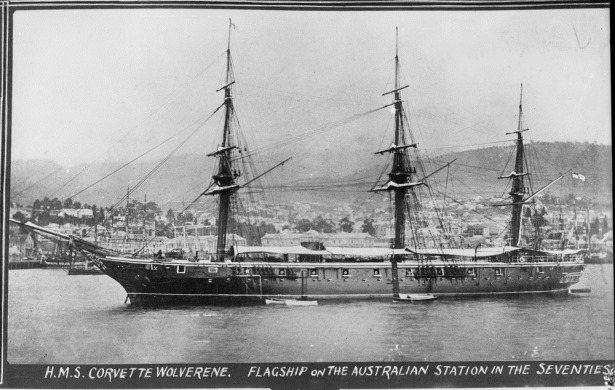 |
 |
|
|
| 64 pounder. Sunset Friday. Nearly one-fourth of the ships company suffered from sea sicknesses during the run down. Saturday morning. A party of officers and the press representatives put off from the ship, landed near Hole in the Wall, and walked across the hill to the Jervis Bay Lighthouse. The track lay through thick bush, covered with a luxuriant undergrowth of grass, bracken and native flowers, |
 |
| On emerging from the bush we crossed an open grassy plain for the lighthouse. We found the light-keeper and his numerous family in the best of health, and the lighthouse itself and it's surroundings were in excellent condition, everything being neat and clean. Looking seaward from the lighthouse the view is extremely grand. The great ocean stretched away in front looking somewhat desolate and lonely, while the long easterly swell dashed on the cliffs at our feet with terrific violence threw huge masses of white feathery spray high into the air, which reflected all the colours of the rainbow as it fell back into the sea again. Lieutenant Cohen, assisted by Dr. Knaggs and Midshipman Lewington took a number of views of the lighthouse and the occupants off the houses situated on the bleak, lonely headland, after which we started the return journey, leaving a number of telegraphic messages to be dispatched to the city prior to bidding the people who live in this lonely spot farewell. |
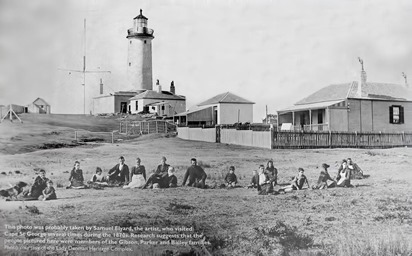 |
| A stiff trudge bought us to the margins of Jervis Bay, where the cutter was waiting to transfer us to the Wolverene, lying about a mile away from the shore. 2.15pm the crew manned the capstan and raised the anchor, to the tune of "Ballyhooley" A target was then dropped over the side, and the Wolverene steamed round while the gun's crews fired at it at ranges varying from 1000 to 1500 yards. Some excellent practice was made, the majority of the shots falling on either side of the object aimed at, the general direction of the missiles being good. Nearly every shot would have holed a vessel. Riflemen were also stationed on the tops, and these took long shots at the target: but despite the inducement offered by Captain Hixon of " a pound for every man who strikes it", they were unable to hit the flag, owing to the unsteadiness of the vessel. |
| After clearing the great headland we stood well out to sea, obtaining a good view of a fine four-masted vessel, which, with most of her canvas spread to the breeze, was heading for Sydney as our good ship left the bay behind her. |
 Leaving Jervis Bay. |
| Darkness now settled over the face of the old ocean, the only signs of life visible to our eyes being the lights of passing vessels and the rays of the friendly beacon shining forth from the lighthouse on the now far distant cape. The Wolverene made many trips to Jervis Bay for ‘shot practice” but this particular journey to Jervis Bay was at an end, this report gives us a valuable insight into the life and times of Jervis Bay and the navy around the late 1880's. |
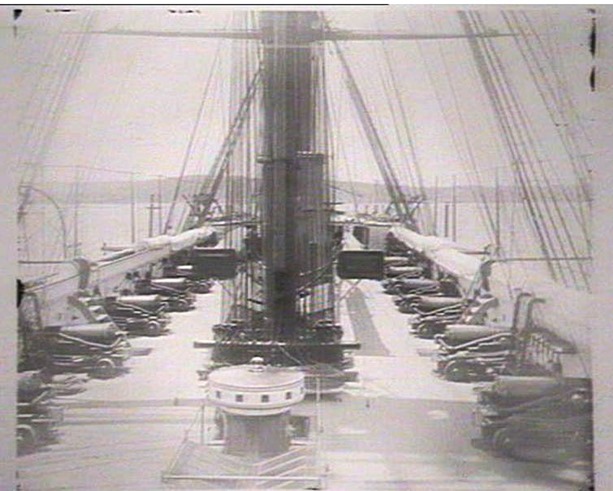 Deck of the H.M.S Wolverene Deck of the H.M.S Wolverene |
| And what became of the H.M.C.S Wolverene? In the early 1880's the Wolverene was presented by the Imperial Government to the New South Wales Government as a drill and training ship for the New South Wales Naval Brigade. The title of the ship was then changed from H.M.S Wolverine to H.M.C.S (Her Majesty's Colonial Ship) Wolverene. The vessel served as a training ship for the Naval Brigade for quite a number of years. At the end of her service in that capacity the Wolverene was sold to Mr. Peter Ellison, of Millers Point, Sydney. Later the vessel loaded coal for South America, and during the voyage her seams opened, whereupon the vessel put into Auckland, New Zealand, where she was condemned in March 1895. The vessel was subsequently broken up in Auckland Harbour. |






